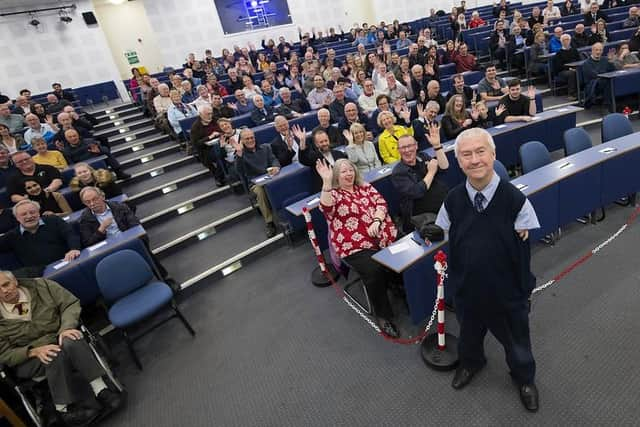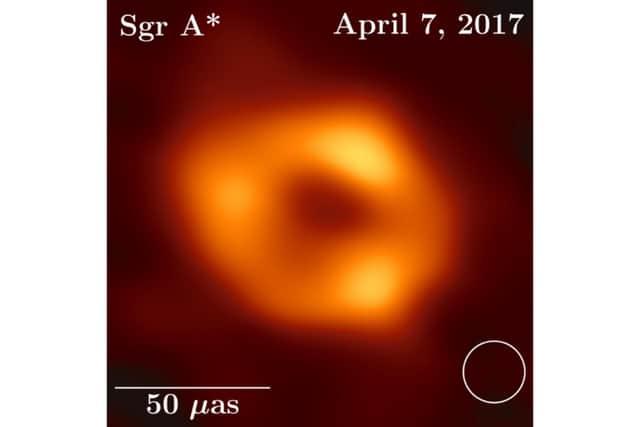Black hole at the centre of our galaxy revealed by UCLAN research team
and live on Freeview channel 276
The announcement last Thursday provides overwhelming evidence that the object is indeed a black hole and yields valuable clues about the workings of such giants, which are thought to reside at the centre of most galaxies.
The UCLan researchers, led by the Head of the School of Natural Sciences, Professor Derek Ward Thompson, are part of the Event Horizon Telescope (EHT) Collaboration, which has used observations from a worldwide network of eight radio telescopes to take the image, which is a long-anticipated look at the massive object that sits at the centre of our galaxy.
Advertisement
Hide AdAdvertisement
Hide AdScientists had previously seen stars orbiting around something invisible, compact, and very massive at the centre of the Milky Way, which strongly suggested that this object, known as Sagittarius A, is a black hole and the team’s image provides the first direct visual evidence of it.


Although we cannot see the black hole itself, because it is completely dark, glowing gas around it reveals a tell-tale signature: a dark central region, called a “shadow”, surrounded by a bright ring-like structure.
The new view captures light bent by the powerful gravity of the black hole, which is four million times more massive than our Sun.
The EHT team’s results have now been published in a special issue of The Astrophysical Journal Letters.
Advertisement
Hide AdAdvertisement
Hide AdProfessor Ward-Thompson, who has been named the chair of the EHT publication committee, and the communicating author for the six research papers which are to be published as a result of the discovery, said: “The publication of the EHT picture of the Sagittarius A* black hole is a tremendously exciting achievement by the collaboration.


“The University of Central Lancashire has been associated with the James Clerk Maxwell Telescope (JCMT) in Hawaii for over 30 years, and the JCMT is a core part of the world-wide network of telescopes that has taken this picture.”
EHT Project Scientist Geoffrey Bower from the Institute of Astronomy and Astrophysics, Academia Sinica, Taipei, added: “We were stunned by how well the size of the ring agreed with predictions from Einstein’s Theory of General Relativity."
“These unprecedented observations have greatly improved our understanding of what happens at the very centre of our galaxy and offer new insights on how these giant black holes interact with their surroundings.”
Advertisement
Hide AdAdvertisement
Hide AdTo image the black hole, the team created the EHT, an “Earth-sized” virtual telescope made up of 8 observatories, which observed Sgr A on multiple nights, collecting data for many hours in a row.
It was made possible through the ingenuity of more than 300 researchers from 80 institutes that make up the EHT Collaboration.
The breakthrough follows the collaboration’s 2019 release of the first image of a black hole, called M87, at the centre of the more distant Messier 87 galaxy.
M87 is more than a thousand times bigger than ours, with the images of two black holes of different sizes offering the opportunity to understand how they compare.
The ongoing expansion of the EHT network, and significant technological upgrades will allow scientists to share even more images, as well as movies, of black holes in the near future.
